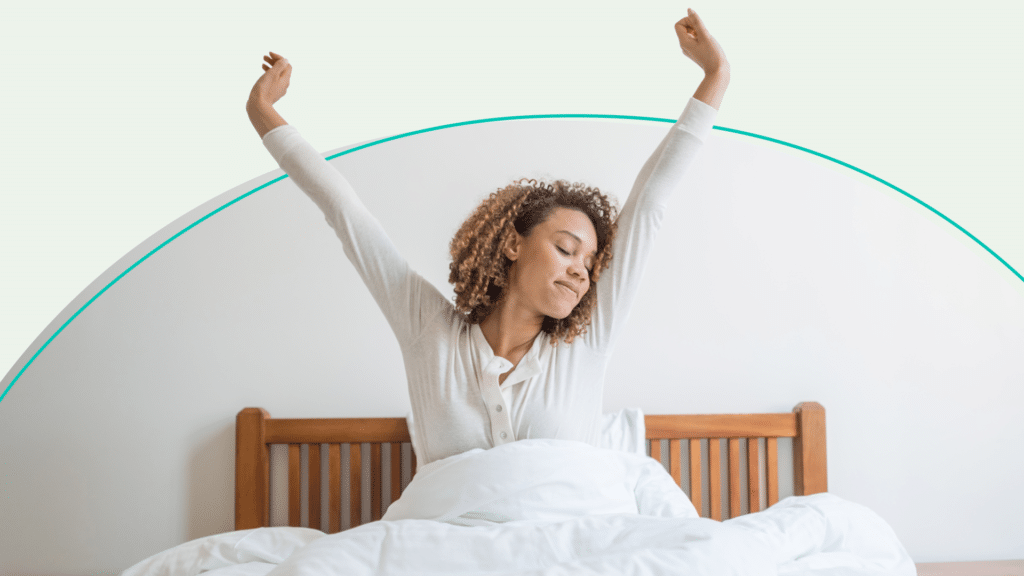Free UK Delivery*
0% Finance Available
Old Bed & Mattress
Sleep Talk Blog, Health & Wellbeing
9 Bedroom Wellness Ideas, How to Become Stress Free in Your Bedroom
Bedroom Wellness Ideas
After a hard day, the best thing you can do for your mental health is to retreat to your bedroom, lie on your bed, close your eyes, and relax. But how many of us can honestly say our bedrooms give us a sense of well-being?
Increasing wellness in your bedroom gives you somewhere comfortable to unwind, which is one of the best ways to ease everyday stress.
Something as simple as de-cluttering and cleaning can work wonders, or you can go as far as purifying the air and buying a natural mattress.
This article explores how to increase bedroom wellness, with expert tips ranging from free to a few hundred pounds.
Let’s jump in!
De-clutter and clean
Firstly, de-clutter and clean your bedroom.

Cleaning is a therapy in and of itself, and having a clean, organised bedroom free from clutter is a fantastic way to calm an anxious mind.
We like removing all furniture from our bedrooms and wiping it down outside so that when we return it, everything is spick and span.
Banish chemical cleaners
When cleaning your bedroom, banish chemicals in favour of pH-neutral cleaners and probiotic cleaning sprays. Chemicals can trigger allergy-like symptoms like red, itchy eyes, sneezing, coughing, and headaches.
Additionally, chemicals linger, and over time you can coat your whole bedroom in chemicals that are detrimental to your long-term health.
Purify the air
The only way to purify the air inside your bedroom is with an electric air purifier with a HEPA filter and, ideally, an activated carbon filter.

HEPA filters remove dust, microorganisms, and pollen, while activated carbon filters trap odours, smoke, fumes, and chemicals. You need both for proper air purification because they trap different size particles and particulates.
Embrace plants
Greenery in the home is associated with reduced depression and anxiety. This systematic review of greenspace exposure and sleep concludes that greenspace exposure is associated with improved sleep quality and quantity.
The bottom line is that plants in your bedroom improve wellness and can help you sleep, especially if you work indoors.

Aromatherapy
Aromatherapy involves diffusing scented oils for relaxant qualities. Although studies on aromatherapy have mixed results, they work for some people, meaning they could be a great way to destress if you’re willing to give it a go.
You need an electronic oil diffuser and a pack of scented oils. Some of our favourites include peppermint, gingerbread, and allspice.

Get a natural mattress
Natural mattresses use at least 90% natural materials, including wool, mohair, bamboo fibre, natural latex, and cotton. The benefit is a significant reduction in mattress chemicals, which can trigger allergies in some people.
Another benefit to natural mattresses is they do not have a synthetic smell, so they have no harsh chemical smells out of the factory.

Create a mini-interest space
One of the best ways to increase bedroom wellness is to embrace the things you love. For example, if you love painting, create an art space, or if you love reading, create a reading space where you can unwind with a good book. Turning your bedroom into a place of enjoyment can work wonders for your mental health and make you look forward to coming home
Embrace comfort colours
While the conventional advice is to embrace happy colours like blue, you are best off using colours that make you feel relaxed, whatever they may be.

Some people find greys and browns relaxing, even though conventional wisdom says they are depressing and bleak. However, always make sure you have bright pops of colour, such as yellow scatter cushions or bright artwork.
Position mirrors indirectly
Mirrors are brilliant for making bedrooms look brighter and bigger, but they can also make them look cluttered if they are facing you.
The best way to position mirrors is indirect, i.e., not in your line of sight when you enter your bedroom. Play with your mirror positioning to find a sweet spot – this is usually on one of the walls running alongside your bed.

